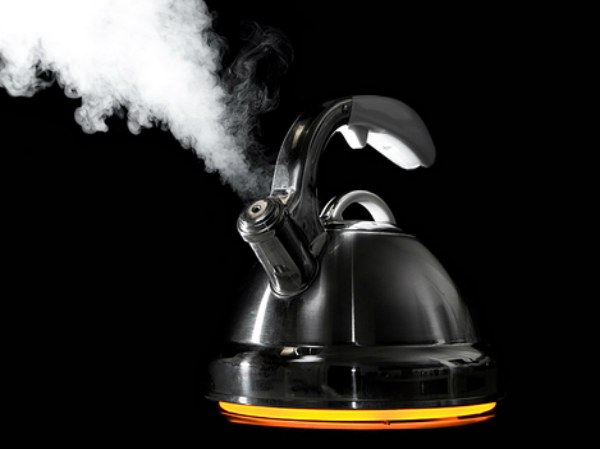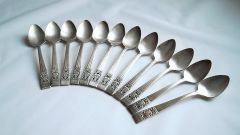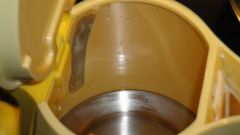Cleaning the kettle outside
For cleaning of metal surfaces is now offered quite a lot of expensive cleaning products. However, not all have high reliability, in addition, they may contain toxic components. But it does not matter, you can achieve excellent results by using conventional means, which are in every house.
Metal teapot rinse well with hot water. This will help to remove all the soluble elements of the RAID and to prepare it for cleaning. Take a small amount of ordinary baking soda, poured it in a saucer, and an old toothbrush.
Wet brush ordinary tap water, dip it in a saucer with baking soda and thoroughly wipe the kettle, until the metallic luster. To clean the whole kettle will take about 30 minutes. After this again rinse it with hot water. Instead of soda you can take tooth powder, it's even better to cope with this task.
Often used for cleaning regular cleaning and metal sponge. This method is less effective and requires more time and effort. If you use too hard a metal sponge on the surface of the kettle will remain scratches that are hopelessly spoil its appearance.
Cleaning inside kettle
Over time, the inner surface of the kettle is the plaque that is not washed off even with the most careful treatment. It precipitates the salts contained in the water. There are several ways to clean this plaque, allowing you to return the kettle to its original purity.
One of the most popular methods is based on the use of citric acid. To clean, fill the kettle with water and add one tablespoon of citric acid. Often this ingredient is sold in bags. In this case, add the kettle with two tea bags.
Put the kettle on the stove and wait until it boils. Allow the acid solution to boil for 10 minutes, this will be enough. Turn off the kettle and allow it to fully cool, the best option is to leave it on overnight. After that, drain the water and rinse the kettle a regular sponge coated with dishwashing detergent. Thoroughly wash the kettle, fill it with water and after it boils, pour it.
In some cases, the plaque is so strong that the first attempt fails to remove it. Then wipe the kettle from the inside with a sponge with baking soda, then repeat the boiling with citric acid and clean the kettle from scale. To prevent such condition of the inner surface, clean the kettle every 2-3 months.
Citric acid can be replaced by vinegar, which the maker need to add about a half Cup and boil for 30 minutes. After the cleaning procedure it is necessary carefully to wash the kettle and boil water in it 2 times, washing it each time after boiling. If this is not done, water will be a long time to give vinegar, not very nice.



